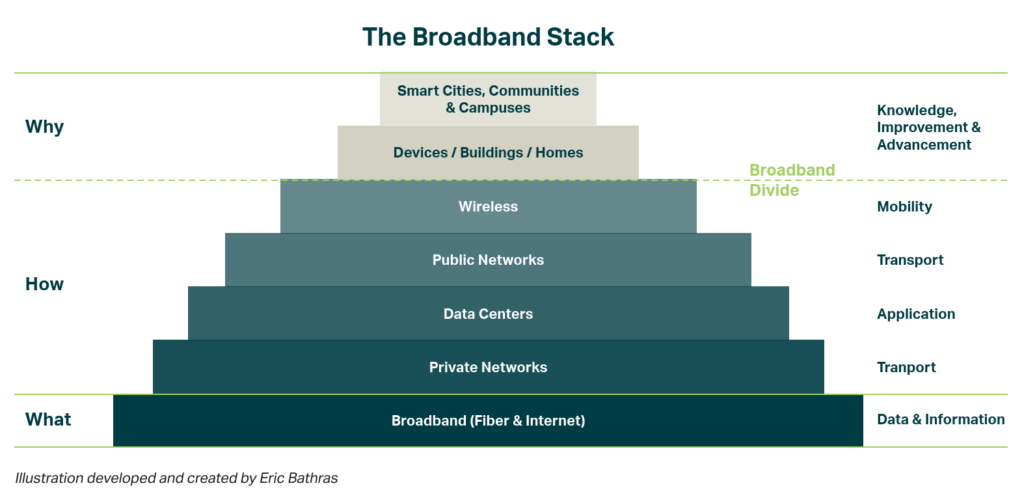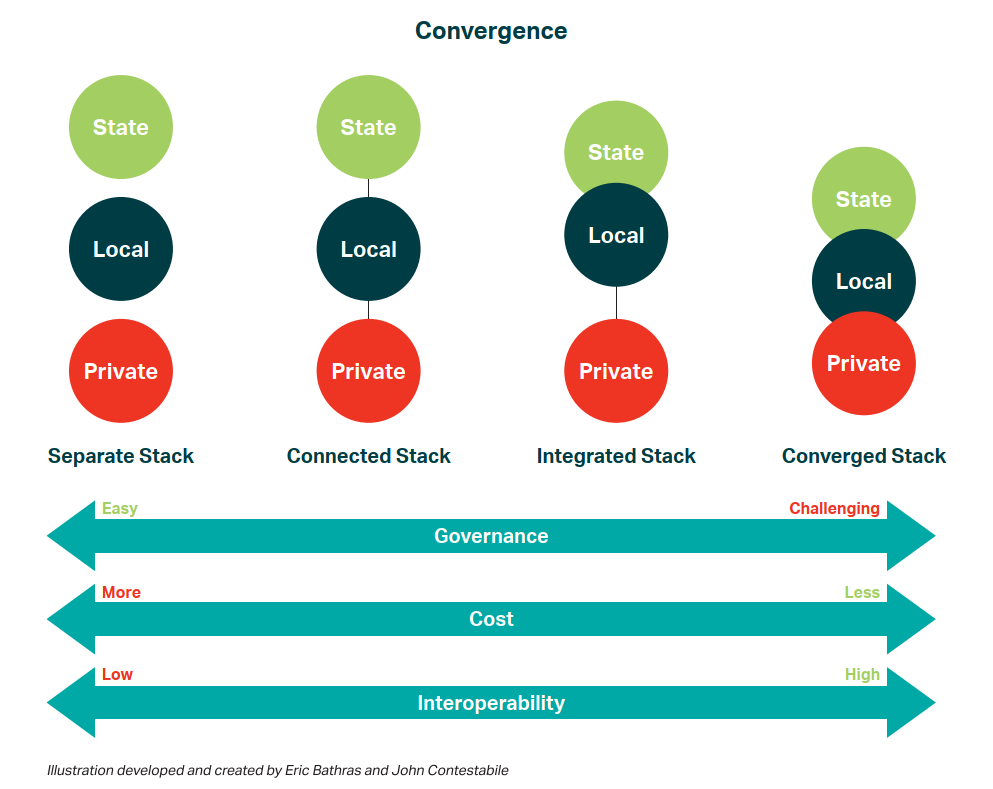Bridging the broadband divide: Getting to the possible
In order to achieve an affordable and effective way to connect to high-speed broadband, we have identified an opportunity to get to the possible – the possibility to bridge the broadband divide through the convergence of broadband stacks. This convergence will empower knowledge, improve access to information and advance equity through our communities.
The coronavirus pandemic pushed the digital world forward as we worked collectively to find innovative solutions to keep us connected. However, it exposed and amplified the existing digital divide between areas with established broadband infrastructure and those without. This disparity grew as everything from remote learning, remote working, and telehealth activities required an effective digital connection. Reaching far beyond sheer convenience, an affordable and effective means to connect to data and information is now essential as it drives and influences our access to critical applications, innovation and opportunity.
In most cities across the United States, state, local and private infrastructure are separate or loosely connected, with organizations largely deploying their own broadband infrastructures. To advance our communities, we must collectively ensure quality and accessibility to these broadband networks, which can be achieved by converging what we refer to as public-private broadband stacks.
The Broadband Stack is the combination of physical infrastructures and technologies that public and private sector service providers use to connect to devices, locations, end-users and communities in order to improve quality of life experiences, enhance public safety initiatives, and increase economic development activities.
Image: The Broadband Stack

One part of the stack, or one entity, is not enough to be able to bridge this divide. A single form of implementation will not fix it, either. It requires the total partnership, integration, innovation and convergence of the entire broadband stack to create meaningful impacts on our communities, campuses and cities. This will ensure that everyone can address their most fundamental and critical needs and initiatives.
Moving toward converged stacks increases operational capability and lowers costs by reducing parallel infrastructures. The coalescing of state, local and private broadband networks explores the potential that exists for these organizations to partner with one another in order to lay the foundation for wireless mobility, applications and transport needed to unlock access to knowledge, improvement and advancement for all.
Image: Convergence

We can strategically plan and design converged networks that meet the increasing needs for true broadband connectivity. By helping with governance and increasing interoperability, we can deliver significant cost savings for our clients while enhancing social equity for unserved and underserved communities. At present, many organizations operate in separate stacks, each having their own infrastructure. The goal is to move in the direction of a converged stack, which coalesces state, local and private networks and optimizes them through innovative and evolving partnerships. These partnerships guide a greater strategy of aggregation and allows meaningful accessibility through integrated and converged broadband infrastructures. Additionally, technology and public initiatives often extend beyond the means and reach of one organization or agency. These converged partnerships can maximize the existing budgets, unlock economic potential, and strengthen connection for those that are impacted by this digital divide.
Image: Planning for Impact

The pandemic has shown us the importance of enabling remote working, learning and living. An evolution in our approach will allow us to achieve the greatest impact in ensuring equity and connectivity for our communities, campuses, and cities. This transformation in partnership demonstrates the importance of integrating and converging broadband stacks to create positive social outcomes and advancing our communities. Getting to the possible is going beyond our self-imposed limits and capacity of our traditional partnerships, infrastructures and approaches so we can realize the full potential of achieving social equity and economic development opportunity, and improving the quality of life for all.






